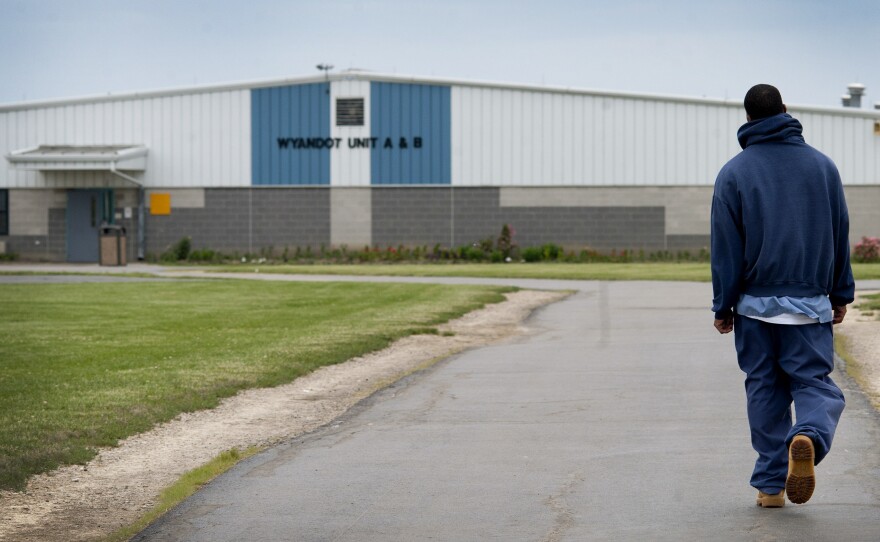In March, Rina Palta reported for Code Switch on a study that found private prisons were disproportionately filled with inmates of color. A broader recent study of federal data from 2005 has revealed something similar: The proportion of white inmates was significantly smaller in private prisons than in public ones, and the proportion of Latino inmates was larger.
Brett Burkhardt, an assistant professor of sociology at the University of Oregon, authored the study. It lands amidst an ongoing debate over how private prisons compare to their public counterparts, in everything from cost-effectiveness to quality of service. If inmates in private prisons were found to have received worse treatment, the study points out, a racial disparity between private and public prison populations could have legal implications.
Burkhardt told me in a phone interview that while there's now a robust and growing body of scholarly literature looking at racial disparities across the U.S. prison system, his study is among the first empirically rigorous analyses of who is being placed into private prisons. It includes data from prisons across the country compiled by the federal Bureau of Justice Statistics.
Burkhardt considered several factors that might have contributed to the disparity:
- security levels (private facilities tend to be used for lower-security offenders)
- immigrant detention facilities skewing the data (the majority of immigrant detainees are Latino)
- the racial demographics of the states where private facilities are located (they're most prominent in the Southwest)
- variations in how data about prison populations were collected or reported
But even after accounting for all of these factors, the percentage of white inmates in private prisons was more than eight points lower than in public facilities, and the percentage of Latino inmates was nearly two points higher. Blacks were slightly more likely to be in private prisons than in public ones, although the difference was statistically marginal. But when blacks and Latinos were considered together, their percentage of the private inmate population was more than four points higher than the corresponding public prison population.
In Rina Palta's story from March, UC-Berkeley Ph.D student Christopher Petrella pointed to age and medical condition as some of the factors explaining the racial disparities he found between private and public prison populations in nine states:
"Younger, healthier inmates, he found — who've come into the system since the war on drugs went into effect — are disproportionately people of color. Older inmates, who generally come with a slew of health problems, skew more white."Steve Owens, senior director of public affairs for Corrections Corp. of America, one of the largest private prison companies in the nation, calls the study 'deeply flawed.' ""In an email, Owens says, 'CCA's government partners determine which inmates are sent to our facilities; our company has no role in their selection.'"Furthermore, he says, 'the contracts we have with our government partners are mutually agreed upon, and as the customer, our government partners have significant leverage regarding provisions.' It's up to the contracting agency, he says, to decide how it wants to distribute inmates and manage health care costs."Owens does not, however, dispute Petrella's numbers."
Burkhardt said his research can't explain the disparities, and his paper points to several areas where follow-up research is merited, including more analysis of the causes and of the potential legal implications of the findings.
Copyright 2014 NPR. To see more, visit http://www.npr.org/






